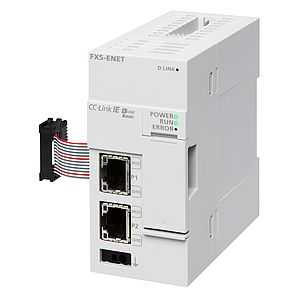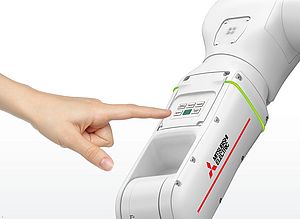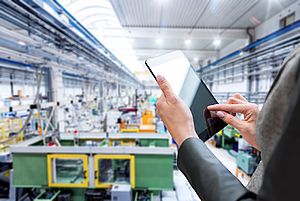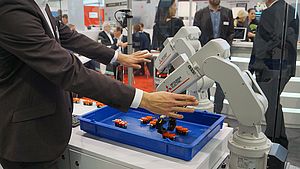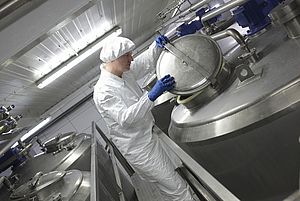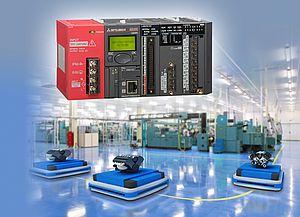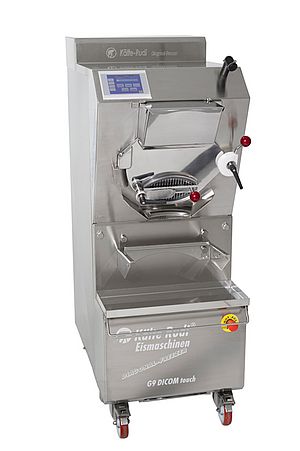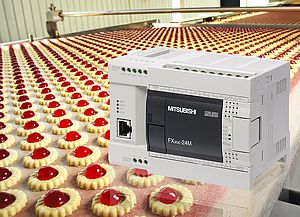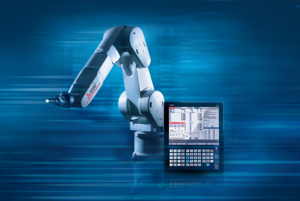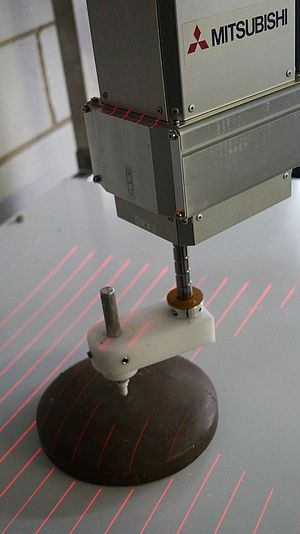“All manufacturing businesses are currently somewhere on a digital automation journey. Regardless of how advanced the industry sector is, those that successfully adopt new technologies will gain an advantage. The challenge for each individual company is understanding the options that are available now and making the right investment choices for the future.”
So, IEN asked ‘what kind of partnerships should companies seek out and what is Mitsubishi Electric’s direct experience with recent events?’
‘Our direct experience with recent events is that there has been a short-term increase in demand for automation in production facilities, simply because the Covid pandemic has caused an acute labour shortage. However, a good automation partner is always looking to the future and will recommend solutions that improve sustainability and profitability in the long-term. Hence, we have worked with our customers and application specialists to deliver components and systems that are practical right now, but also help meet the challenges we can all see in the future.
The knock-on effect of this is that automation solutions, particularly robotics have had to become much easier to use. It’s taken a huge amount of programming and systems development within the robot itself to make the set-up software and its controller are simpler to operate. This makes life easier both for the integrator during installation and for the operator to make changes to the robot’s set-up and behaviour while in-use.
I’ll come back to this point about making robots easier to use and how AI fits in, but first it’s worth mentioning that market demand is also driving change. Particularly for consumer goods where batch sizes are getting smaller. I would say the key word is Lot #1 where the number of possible product variations is virtually infinite, and the robot has to adapt like a human worker would.
We’ve overseen applications for example where a robot is used to customise an individual item that was ordered online. A real example of IIoT at work. Regardless of whether the robot is completing an assembly sequence, assisting a human with a difficult work holding task, or simply helping to pick-and-pack irregular items on a production line, we are getting closer to our robots - as they are getting smarter.
To make a production line more flexible, when compared to the past, changes needed to be possible without any mechanical adjustments. Manual parameter changes for product changeover for example take too long and are costly. Robots help to reduce the changeover time and increase the flexibility. Additionally, Mitsubishi Electric offers this by employing different solutions within the realm of digitalisation, this includes everything from programming to safety, maintenance, data storage and processing, plus far-reaching connectivity options.
Advancements such as Edge processing, cloud services and artificial intelligence feature inside the products we sell within and around robotics. The overall objective however is to enhance their efficiency and their effectiveness, while making them easier commission and deploy. Practical things like maintenance can be made more cost effective very quickly. Our latest robots have a form of AI onboard, and they monitor their own activity, the service algorithm can then predict when maintenance is required. It can even order replacement wear parts and service kits to arrive when they are needed.
The upshot is that a robot can work longer between service intervals and completely prevent predictable failures. This a good segue back into why the operators don’t require a deep knowledge about the programming of the robot to carry out the hardware integration. We are getting closer to true plug-and-play operation.
We have moved more toward graphical visual programming, so going for a drag-and-drop user interface - like you have on a tablet or on a touch PC. All it takes is for the user to move the blocks into place, so everybody can directly see and understand how the robot can be programmed, without knowledge of coding. For our cobot products, we go a step further. The MELFA ASSISTA robot is a good example, it allows the user to set it in ‘teach’ mode and then physically manipulate the arm to the exact spot where it is needed, tell it what action to take from a menu and press ‘record’. That function is now stored and ready to deploy.
Keeping a close distance
Meeting new demands for physical distancing between workers has also created an opportunity for cobots. Taking for example our industrial Cobot the MELFA ASSISTA, it can improve the timeframe for production changes, add flexibility and reduce planning. There is also the bonus that robots almost always relieve people from the more monotonous, boring or repetitive tasks. Which inevitably increases speed and efficiency, at the same time as improving consistency and quality.
A Cobot’s operational speed is usually limited due to safety regulations as it relies mainly on low-torque operation to be ‘touch-safe’. What is different about our MELFA ASSISTA model, however, is that it can also be combined with safety equipment like safety light curtains and safety scanners. In this operating mode it can run at higher speeds, so working faster if no human is close to the system. Like the industrial robots, if a human is detected by the scanners the robot will adjust down to the calibrated speed and then can work safely with the human present.
So, looking at it from an integration perspective, we think it is faster. It could also be more economical compared to an industrial robot as well; and if you only plan to use it in the calibrated mode, you can use less space compared to the industrial robot.
Our offer also includes a cobot mounted on an AGV/AMR or trolley, which can be deployed quickly to different places inside the manufacturing process wherever there is demand. These units can recognise each individual workstation and change its operating routine to match. The Cobot can be used without physical barriers but still ensure safety while working together with human personnel, so will fit more easily into an existing manufacturing set up.
Improvements in vision systems and safety sensors have also transformed the deployment of conventional high-speed industrial robots. Even large industrial robots do not require physical cages and interlocked gates anymore. Using safety scanners or safety light curtains instead allows robots to operate very quickly when people are not present, but slow-down in stages as a person’s proximity increases. They also speed-up again much faster when a person steps away, which can transform flexibility, and overall productivity.
Because they are often deployed in pairs or multiples, we use AI to automatically avoid collisions and work out the most efficient path of movement both before and after more than one robot is deployed together. On a PLC based system three robots can communicate over the back plane, automatically checking each other effectively in real-time. This leads to faster deployment and less space required on the production floor, which creates a virtuous circle of cost saving and reduced footprint. The lack of safety fences and rigid access control measures for example results a smaller initial investment cost required when integrating a robot into an existing manufacturing process.
Changes for the better
Vertical integration into the production environment is also a critical path to improved deployment, and this aspect of connectivity is worth mentioning at this point. We are offering a OPC UA robot companion specification that makes use of the OPC UA standard which is designed to provide a secure connection between automation devices (like our robots) up to the cloud.
Our Iconics SCADA visualization suite provides very easy to understand visual operational status and maintenance data. It is another convenient window into key information about the individual robot - from the serial number to the software driver version number and so on. We are taking predictive and preventive maintenance information directly from the robot and then pushing this data via OPC UA or MQTT into the cloud so that everybody with a dashboard can have up-to-date visibility.
For this reason, in the future, I can see some aspects such as maintenance and deployment becoming even simpler, while the sophistication of operation increases exponentially. You can already see how for some tasks; the robots don’t need to be programmed. If you follow this thought, it’s easy to predict that Robots will rely more on the AI functionally they already have, and we develop algorithms that allow the robot to find its own movement pattern to optimise cycle times and power down automatically to maximise energy saving for example.
Market demands are changing more frequently and quickly - that’s why we are always working to add maximum flexibility and efficiency to our robots. To support workers and become a partner in the manufacturing process. This is also the reason our robots have been made smarter using AI capabilities, and why we have incorporated a meaningful number of options to connect them with an IT environment.












